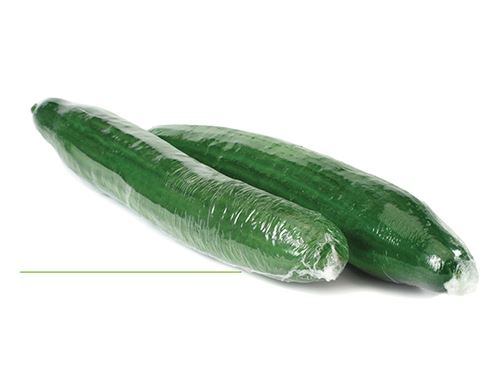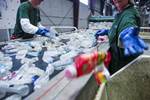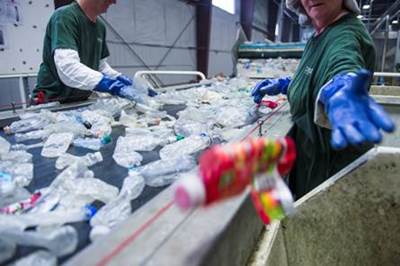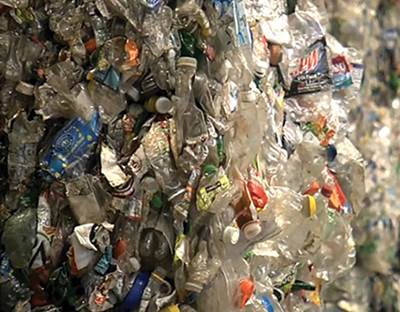The Business Advantage of Sustainability
Companies promote their sustainability commitment in various ways, but beneath the promises and promotional materials should be a true corporate commitment to sustainability goals that provide meaningful environmental, economic, and social benefits.
Many people question what “sustainability” really means. Companies promote their sustainability commitment in various ways,and consumers sometimes choose products branded as “sustainable” without fully understanding the benefits they offer. But beneath all of the promises and promotional materials, there should always be a true corporate commitment to sustainability goals that provide meaningful environmental, economic, and social benefits.
Plastics are among the most widely used and recyclable materials on the planet, and plastics processors, especially in the packaging industry, have a responsibility to make sustainable production a key part of their business practices. At Dow, we define sustainability as the development of solutions that benefit the planet, enrich people, and create social and economic rewards. As such, sustainability has to be far-reaching and ingrained into every decision a company makes. It’s not an attribute unto itself, but rather a holistic way of thinking about a product’s entire lifecycle.
A NEW WORLD
The world is changing rapidly, and a changing world means a changing marketplace. As the population grows, so does urbanization and the consumption of natural resources. This increased consumption forces companies to develop solutions to address the problem and learn how to do more with less, while dealing with the rising costs of energy, capital equipment, and raw materials.
For instance, many brand owners in the packaged food industry are switching to flexible plastic packaging because it uses less material, is lighter weight, and offers consumers the convenience they need for on-the-go lifestyles. The amounts and types of packaging used must accommodate the growing population and its needs as consumers’ tastes change. All of these changes have a chain reaction that is far-reaching in its impact on industry.
Consumers are more aware than ever of what goes into every product they purchase. Because consumers don’t think about the packaging separately from the products they buy, packaging can affect performance in the marketplace as much as the product itself.
WHY BE SUSTAINABLE?
Sustainability practices can improve economic returns and generate a positive image for businesses and their products. Since brand owners are looking for every opportunity to win over a wide variety of interest groups, from questioning consumers to finicky financial analysts, it is advantageous for processors to consider their customers’ sustainability needs along with specified performance requirements. The ability to provide a product that fulfills customers’ goals and improves their bottom lines means that those customers will come to trust in and depend on the processors for help in achieving their future sustainability goals.
The financial advantage of implementing sustainability practices is undeniable. The formula for finding the ideal balance of resources expended versus value to the customer is the key to delivering the most profitable results in terms of revenue generated and environmental advantages delivered. A product’s value goes well beyond its cost. Conserving resources and reducing waste while delivering strong results is financially advantageous to processors.
Besides the financial advantages, proactively instituting true sustainability practices prepares a company for future government mandates and consumer demands related to sustainability. Instead of having to invest and scramble to barely meet new requirements, companies that are already in line with new expectations can allocate their financial and intellectual resources to sustainable innovation. The plastics processors that are already engaged in sustainable practices are better positioned to respond to these external pressures and gain competitive advantages in several areas.
HOW SUSTAINABILITY AFFECTS BUSINESS
The product lifecycle involves many steps and many concerned parties. This can impact how a business addresses sustainability across a product’s lifecycle. The many interested constituents can be divided into three main groups. The first group consists of those who have a direct impact on the actual creation of the package—the resin manufacturers, equipment manufacturers, and plastic processors. The second group is the people who interact with the package after it has been created: brand owners, co-packers, retailers, consumers, and partners. The third group is comprised of influencers that do not directly touch the packaging or its components but still have a tremendous impact on it, such as government regulators, non-governmental organizations (NGOs), industry associations, educators, environmental groups, and the media.
All of these groups put pressure on a business to not just talk the sustainability talk, but also walk the walk. Thanks to improved understanding and lightning-fast communications channels, the days of “greenwashing” are over, and companies must deliver measurable results to satisfy these growing demands. This drives businesses to make sustainability advances and garner positive results that can be verified using scientific principles.
In addition to better understanding market needs, a distinct advantage of improving relationships with stakeholders is that many of these influencers have significant impact within the industry. Governmental organizations and NGOs may publish lists of preferred companies or spotlight companies that have demonstrable commitments to sustainability. Consumer activists may share their learnings through social media that reach large numbers of consumers in a very short time.
Regulators and others will also have a strong impact. Though winning an award or recognition should not be the sole motivation for pursuing sustainability, public recognition and awards can help increase a company’s credibility within the industry and the general public. For example, Dow Jones compiles an annual Sustainability Index listing—think of the boost in credibility a business can gain from that!
Improved relationships with stakeholders have other effects beyond recognition. Industry experts from companies with solid sustainability programs become go-to sources, opening the door for publicity opportunities. If an expert is invited to sit on an organization’s panel, or asked to become a collaboration partner with another company, this generates significant and positive exposure as well as direct business opportunities.
Another benefit of an effective sustainability program is heightened employee engagement. According to Sustainable Industries magazine (sustainableindustries.com), companies that demonstrate to employees how they are undertaking sustainability will achieve growth in earnings per share nearly four times that of organizations with lower engagement in the same industry.
Additionally, 92% of Millenials (those born between 1980 and 2000), who are the up-and-coming business leaders, say they want to work for a socially responsible company. This means that companies that commit to sustainability will attract top employees from the talent pool. To enjoy these advantages, everyone on the team should be a part of sustainability engagement, from the factory floor to the top-floor corner office.
Businesses that show the public their progress reap positive public relations results. Many organizations publish yearly sustainability reports detailing the impacts of their programs, with data describing how they have improved upon the previous year, progress on goals, and reports on internal initiatives, along with a wealth of other information.
Transparency in sustainability reporting will improve your brand’s overall image and marketability, making your business a trusted partner of other organizations and consumers alike. When key influencers want to collaborate with your business, it will lead to many more opportunities to innovate and will also increase the chance to enhance symbiotic relationships with other organizations. These expanded relationships lead to a richer value chain and put a company in a position to influence the supply chain.
The environmental advantages of sustainable practices create noticeable improvements. The drive to reduce waste and lower their carbon footprint helps businesses be more creative in how they use their energy—leading to more outlets for improved innovation. Besides the “good karma” that results from engaging in sustainability practices, generating less waste is good for business because it means that more purchased raw materials become saleable products. Businesses can reap significant financial benefits by proactively engaging in clean practices rather than having to expend resources to clean up waste later in the product’s lifecycle.
WAYS TO IMPROVE SUSTAINABILITY
Now that we have discussed the “big picture” impact that sustainability has on a business, let’s look at how sustainability performance can be improved within a company’s operations.
Achieving more sustainable production is like a balancing scale: As product performance and value to the customer increases, the amount of resources used in production should decrease, until the proper balance is achieved. Ideally we strive to simultaneously increase performance and decrease resource consumption, but on occasion these two goals can conflict. For example, if the amount of resources saved means that a lower quality package is produced, then the goal of improvement has not been achieved. If the package fails because it has been downgauged too far or simplified too much, the result is a decrease in system sustainability performance, despite the lower resource use.
Keep in mind that resources are not just money or raw materials; they include the water, energy, and manpower used to produce plastic packaging or any other product.
Alternatively, sustainability can also be increased by improving packaging performance. If a new package offers faster packaging speeds or reduced leakage rates, then it could use more resources than a previous iteration and still provide an improvement in sustainability. Processors and brand owners may not realize that better performing packages actually improve total system sustainability performance. This highlights the importance of the proper balancing act to put the two in harmony.
We should always remember that a package protects the product and serves as a vessel to take the product from the factory floor to the point of purchase. If the package fails, but uses less material than an alternative, there really isn’t a benefit. In fact, underperforming packaging makes the product as a whole less sustainable; because the ruined product will be disposed of if the package doesn’t do its job properly. The result of poorer sustainability performance is similar to what might occur from using unnecessary material to protect the product.
It is estimated that 30% of the world’s food is wasted due to spoilage. If a package needs to use more material to effectively delay spoilage, it is actually the more sustainable choice. Even better, if the scrap material from the food’s package is repurposed, that’s another benefit to cite on your sustainability scorecard.
Better-performing packages will positively affect the bottom line because waste reduction leads to lower costs and better profitability. Good barrier properties lead to longer shelf life, so fewer products are wasted. Tougher packages are less likely to suffer punctures due to product abuse, leading to less waste from spoiled product that must be discarded or returned to the manufacturer.
Packages with stronger seals are less likely to open during transportation or handling. When lower sealing temperatures are used during product packaging, filled packages can be produced faster and equipment is utilized better, equating to a stronger return on investment in packaging equipment. On top of that, better seal integrity may lead to a longer shelf life, much to the brand owner’s and consumer’s satisfaction—another example of how good packaging benefits the bottom line.
Part of achieving the balance between sustainability and value is choosing the best raw material and processing methods from the get-go. At this stage, it is beneficial to seek the help of a collaborator or supplier who has expertise in this area and can recommend a strong combination that maximizes results.
Downgauging is one of the most popular ways to decrease the amount of raw material used. It entails using thinner films and layers of plastic to create the final product. Higher performing resins can enable downgauging in film products while maintaining performance, resulting in high-quality products such as flexible plastic pouches, heavy-duty shipping sacks, stretch films, and shrink films.
Using multi-layer extrusion to provide improved functionality with thinner layers of individual materials can also help optimize the balance of performance and resource consumption. Producing a lamination of two or more films can allow for the incorporation of materials that cannot be extruded together, further improving the balance of performance and resource consumption.
In terms of non-tangible resources, some companies are using renewable energy sources like geothermal, wind, and solar power in their plants. This drastically reduces the need to use precious resources like fossil fuels in their day-to-day operations.
Because plastic packaging often weighs less than other options it provides benefits during transportation and distribution of both the packaging and finished goods. Reducing transportation weight will reduce the use of fuel for transportation. This benefit is realized in transportation to the distribution center, then to the retailer, and ultimately to the consumer. It also means that less material will need to be collected for recycling or disposal after the consumer has used the product inside the package.
Recycling scrap as part of a product’s lifecycle also helps improve sustainability. With new compatibilizer materials and technologies, processors can frequently turn scrap from more complex structures containing multiple polymers into reusable material. This is an instance in which collaboration across the value chain is especially important, because a partner can help determine the best solution for the material. As an added benefit, it helps keep the material “in the loop” rather than sending it to a landfill, which is outside the recycle loop. Many plastics are recyclable, and finding smart ways to effectively reuse and recycle them into new packages or energy will produce less total waste and make better use of our raw-material and energy resources.
THE BOTTOM LINE
Anybody can call a product “green” and slap a logo on the product’s label. However, without the facts to back up the claim, it will be discredited fairly easily and can seriously damage a business’ reputation. Companies that are committed to providing solutions that benefit the world from an economic, social, and environmental standpoint are positioned to succeed as the world keeps changing and sustainability becomes increasingly important.
Companies should make sure they work with value-chain partners to achieve the balance of value and sustainability that the marketplace demands. By continuously seeking to improve solutions, manufacturing methods, and relationships within the value chain, it is possible to stay ahead of the competition. In the end, those that are poised to overcome challenges while remaining dedicated to producing a quality result will triumph in the quest for sustainable innovation.
About the Author
Jeff Wooster is the Global Sustainability Leader for The Dow Chemical Company’s Performance Packaging business. He joined Dow in 1988 and has served a variety of functions across the company’s plastics businesses, including product development. Wooster is passionate about sustainability and serves as the lead Dow representative on the American Chemistry Council’s Plastics Division Packaging Team and the Flexible Packaging Association’s Sustainability Task Force. He is also a member of the Board of Directors of AMERIPEN and GreenBlue, and serves on the Executive Committee of the Sustainable Packaging Coalition. Contact: (281) 966-4239; twitter @JeffWoosterRS; www.dow.com/packaging
Related Content
How to Extrusion Blow Mold PHA/PLA Blends
You need to pay attention to the inherent characteristics of biopolymers PHA/PLA materials when setting process parameters to realize better and more consistent outcomes.
Read MoreCompatibilizers Aid Recycling & Upcycling of Mixed Resins
Compatibilizers are proving their worth in boosting critical properties such as impact/stiffness balance of PCR and PIR blends of polyolefins and other plastics.
Read MoreResins & Additives for Sustainability in Vehicles, Electronics, Packaging & Medical
Material suppliers have been stepping up with resins and additives for the ‘circular economy,’ ranging from mechanically or chemically recycled to biobased content.
Read More‘Monomaterial’ Trend in Packaging and Beyond Will Only Thrive
In terms of sustainability measures, monomaterial structures are already making good headway and will evolve even further.
Read MoreRead Next
Sustainable Sheet: Placon Closes the Loop on PET Recycling
Placon reprocesses up to 12,000 lb/day of PCR PET to produce its EcoStar line of sheet.
Read MoreIt Ain't Easy Being Green
But efforts by packaging processors to become more sustainable will be worth it.
Read MoreSustainable Injection Molding: Amcor and the Big Picture
How the world’s biggest producer of PET packaging measures the environmental footprint of its operation.
Read More








(1)2.png;maxWidth=300;quality=90)












.png;maxWidth=300;quality=90)









